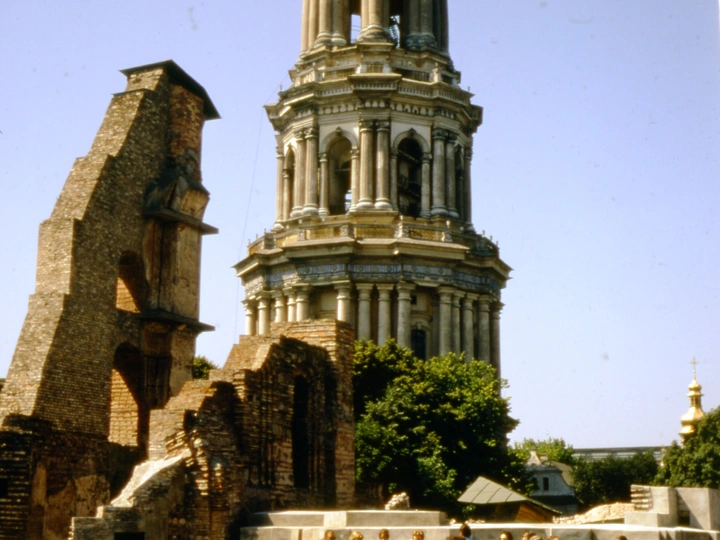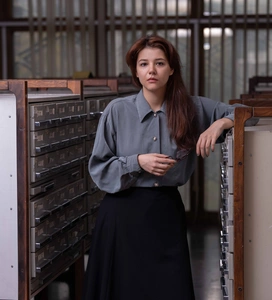Nothing Ever Happens

Timur Dzhafarov
I'm a Ukrainian filmmaker and visual artist working at the intersection of documentary film, spatial research, and video art. I investigate suppressed spatial narratives and focus on how authoritarian societies shape cultural environments through both construction and destruction. My practice depends on alternative means of film production — collaborative, independent, urgent, and multidisciplinary.
I studied documentary filmmaking at the Institute of Screen Arts in Kyiv. In 2016–2018, I was part of the artist-run Open Library of Fine Arts and a member of the curatorial council of Plivka Art Centre. I have collaborated as producer and casting director with various filmmakers and artists including Andrėja Šaltytė & Leo Tax, Matthias Schoenijahn, Roman Himey & Yarema Malashchuk, Ostap Yashchuk, and others. Since 2020, I have worked as a film programmer at KINOKO film festival. Since 2022, I have also been part of a Ukrainian volunteer group.
I am member of the multidisciplinary group Centre for Spatial Technologies and as creative producer have worked on "City Within a Building" film, "Nebelivka Hypothesis", situated testimonies for the "Mariupol Drama Theatre Spatial Archive" project, and, most recently, "Church, Chora, Chersonese" — a two-screen video installation based on archival research examining how archaeological studies of the Ancient Greek city of Chersonese have served diverse political agendas from the late 1700s up to Russia's present occupation of Crimea. CST's works have been presented at Venice Architecture Biennale, Akademie der Künste Berlin, ETH Zürich, M HKA Antwerp, and others. We were shortlisted for the #IJ4EU Impact Award 2024 and received a Prix Ars Electronica (Digital Communities) Honorary Mention.
The 1960s, often depicted as a decade of post-war prosperity, colonial emancipation, and sexual liberation, never arrived in Soviet Ukraine. Instead, Ukraine experienced cultural reaction, increasing repression, and a stifling atmosphere marked by forced parochialisation.
Conceived during The New Centre’s “Film and Forensic” workshop and first presented at Videopower’s Unfinished Film Festival, “Nothing Ever Happens” seeks to reclaim “the right to the sixties” retrospectively, exploring what Ukrainian spatial and material culture might have looked like under alternative socio-political conditions.
The project imagines spatial environments that could have housed suppressed or non-existent cultural movements, had they developed freely. Rather than envisioning a utopia, it sketches a scenario with its own contradictions, thus allowing us to distinguish between challenges rooted in imperial violence, new ones emerging under greater freedom, and those that would have persisted regardless.
“Nothing Ever Happens” is a speculative documentary drawing on Peter Watkins’ critique of the “monoform” — mass media’s repressive audiovisual language — and seeks to reinterpret archival material and construct counterfactuals. It takes the form of a research-based video installation, combining archival footage, period-correct synthesiser soundscapes by John Object, and reimaginings of architectural and industrial design.
The research follows three historical threads. The underwhelming nature of Sartre and de Beauvoir’s 1964 visit to Kyiv forms one; the advancement of audiovisual technologies and Kyiv as a centre of cybernetics forms another; cultural venues embodying the mythos of freedom in Western Europe, but distorted or absent in the Eastern Bloc, form the third.
While conventional historical analysis risks centring imperial power — the only reliably documented reality — the project instead develops the missing potentials of the era, buried under the Iron Curtain.
